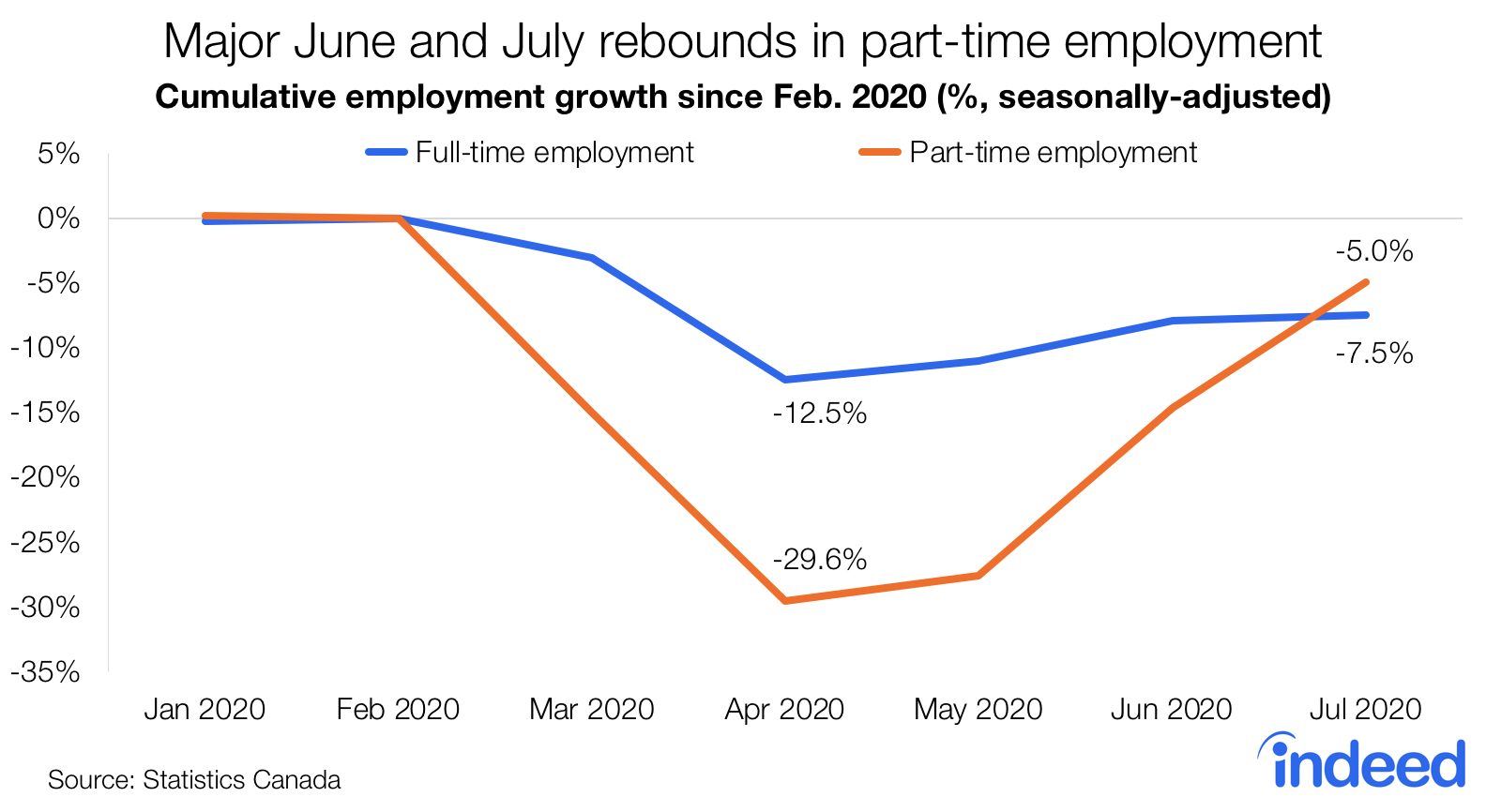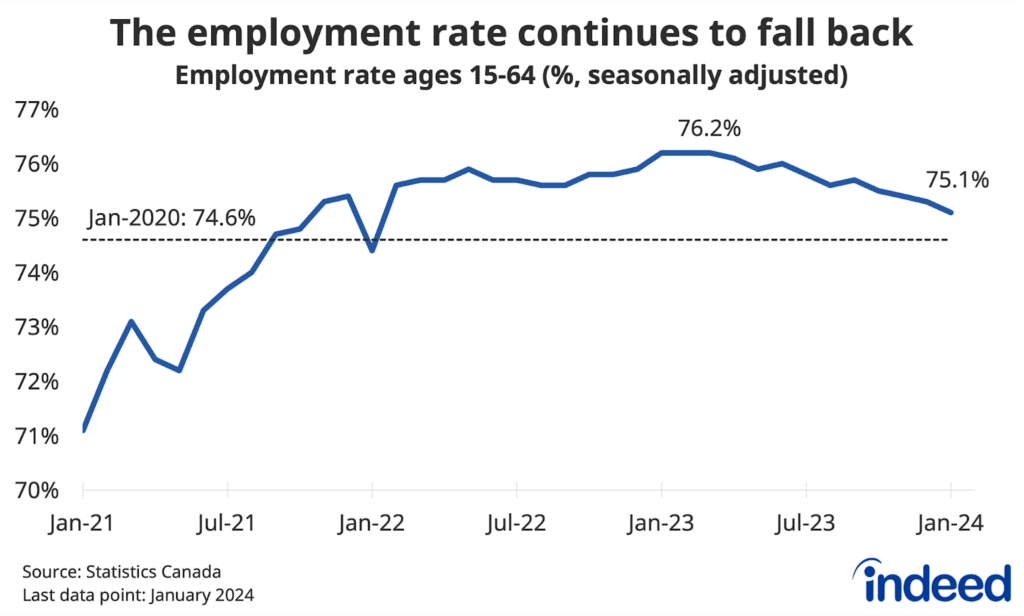Part-time Canadian employment nose-dived earlier in the pandemic, and the bounce-back has been nearly as dramatic. The number of people usually working less than 30 hours per week plunged nearly 30% between February and April, but after massive gains in June and July, their ranks only stood 5% below where they entered the crisis. Conversely, full-time employment fell less early on (-12.5%), but remains 7.5% below February levels.
Part-time workers are defined as those usually working less than 30 hours per week. As a result, the sharp rebound isn’t being driven by those who entered the crisis as full-time workers but then moved to reduced schedules, who are now classified as full-time, but absent. In fact, the return to work among previously absent workers has been pretty strong.
Increasing share likely want full-time hours
Rather, there’s been a rebound in people starting new part-time jobs, but for different reasons than they usually do. In particular, the weak job market looks to have caused an uptick in people taking whatever hours they can get, working part-time involuntarily due to economic reasons. The share of part-time workers who say they were doing so because of either “business conditions” or because they “couldn’t find full time work” rose to 30% this July, from 22% the same time last year. On the flip side, the share of part-timers doing so for personal preference, or because they were in school were both down sharply from a year earlier.
Overall, this highlights how many sectors of the economy have reopened, but aren’t operating at their usual capacity. As a result, many new hires are likely working fewer hours than they’d prefer. At the same time, there’s also been a smaller, but still noticeable increase in the share of part-time workers doing so for “other” voluntary reasons. This group might include some previously laid-off workers working relatively few hours to remain eligible for CERB.
The August job numbers will provide a snapshot of conditions with most of the economy fully in “phase-3”, including a return to indoor dining across parts of Ontario where it hadn’t yet returned as of the July job numbers. This could mean a few more “quick wins” for the job market as it recovers from its early plummet. However, like in previous months, it will be important to look underneath the hood of the headline numbers, at things like why people are working part-time, and whether the ranks of those permanently laid-off are falling, to gauge how much the labour market has actually healed.






